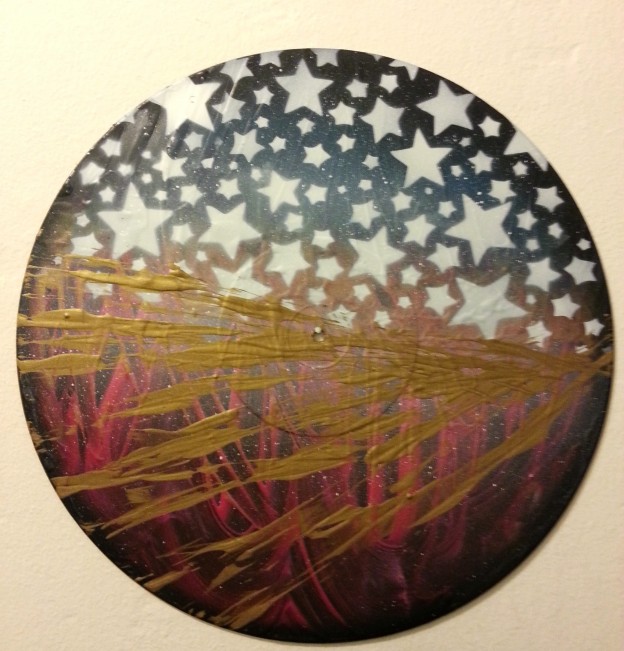There’s nothing to beat an easel for keeping a painting in place while you’re working on it. Working vertically also means you’re working in the same plane as the painting will finally be hung, reduces the risk of spilling anything on it, or dust collecting on it. You can work sitting on a stool or standing, though standing at an easel makes it easy to step back to see how the painting is progressing.
What Kind of Easel Should I Get?
The type of easel you get depends on the kind of painting you do the most. If you like working on large-scale canvases, then a table-top easel is unsuitable. Likewise, if you only ever work on a small scale, then a table-top easel may be more ideal than a floor-standing easel. If you enjoy standing to paint, then consider a floor-standing easel. And if you paint very vigorously, you’ll want a heavy easel for stability.
Does It Matter What Medium I’m Using?
If you paint only with watercolors, you probably won’t want an easel which will only hold your work vertically. Look for something that’ll be easy to adjust the angle at which you’re working. Oil paintings really should be held vertically or near vertical because they will collect less dust. Acrylics dry fast enough for dust not to be a real problem.
How Much Does a Painting Easel Cost?
Like most things, the price of easels varies, starting at inexpensive sketching and display easels, and ending at large-scale studio easels. If you’re only just starting out, a table-top easel is probably the best (or sketching easel if you want to stand to paint). But if your heart is set on a floor-standing easel, don’t compromise and buy something else. Rather save up for a bit longer.
Table-Top Easels
If space is an issue these are great as they don’t take up floor space and can be folded up. Available in various forms, including ones that are scaled-down versions of floor-standing easels, tripod easels (three-legged), and ones with storage boxes. Won’t take large-scale paintings. The ease of painting also depends on the height of your work surface; be wary of having bend down to paint.
Studio Easels
Studio easels are large, floor-standing easels that can accommodate big canvases. The ones with a square foot (H-frame) are more stable than the ones with three legs (two at the front, one at the back) but don’t fold up as quickly to prop against a wall. Studio easels can get really huge, heavy, and really expensive! Let the size of canvas you’re realistically going to use be your guide to easel size.
French Easels
A French easel is a three-in-one easel: a sketchbox, an easel, and a canvas carrier. The sketchbox holds your painting supplies and palette; the legs and canvas-holding arm collapse to make it easy to carry; and there’s somewhere to attach the canvas while you’re transporting everything back home. The angle at which you work can be varied between vertical and horizontal.
Sketching, Portable, and Display Easels
Sketching or portable easels are lightweight easels handy for taking outdoors. Check how small it folds down to. Display easels are made for showing a painting and tend to be a bit flimsy for working on. They’re useful for propping up a painting that’s drying, but then so is a wall.
Sketchbox or Paintbox Easels
Variations on a table-top easel, these have a box in which to store your painting supplies. The lid of the box has a lip on which to stand your canvas. If you are just starting out, consider buying one that comes with paints, brushes, etc, inside.
Visit http://painting.about.com for more details.

Leave a Reply
You must be logged in to post a comment.